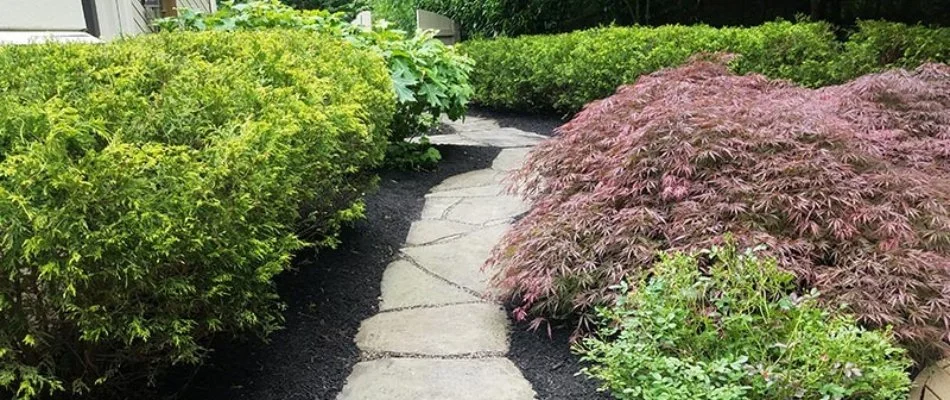Pruning is a crucial maintenance task that helps keep your plants in Pennsylvania healthy and beautiful. It involves removing problematic parts of the plant to free up nutrients and resources for the healthy parts, which means it can stop wasting energy on dead, diseased, damaged, or insect-infested areas. Pruning also opens them up to allow proper airflow and more sunlight to filter through and reach other parts, which they need to grow. Additionally, pruning frees up extra space previously taken up by overgrown branches, allowing the plant to grow in a certain direction. Not only does this promote healthier growth, but it also controls its size.
Pruning removes problematic parts of the plant to free up nutrients/resources to go towards growing the healthy parts.

The primary purpose of pruning is to remove any problematic parts of the plant so that all available nutrients and resources are directed toward promoting new, healthy growth. When you don't prune regularly, these issues will continue to spread throughout the rest of the plant, causing further damage and hindering its overall health. By cutting away those affected areas, you prevent the problem from spreading while freeing up valuable nutrients and resources for use elsewhere within the plant.
Pruning opens up the plant to allow proper airflow and more sunlight to filter through and reach other parts.
Another benefit of pruning is opening up the plant to allow proper airflow and more sunlight to filter through and reach other parts. Proper air circulation prevents moisture buildup around leaves and stems, reducing the risk of fungal infections and diseases. More sunlight exposure promotes photosynthesis, which produces food for the plant and encourages vigorous growth. Without adequate light penetration, some parts of the plant may become weak or die off entirely due to a lack of nourishment. Therefore, pruning ensures every part receives sufficient oxygen and sunlight to thrive.
Pruning frees up extra space previously taken up, allowing the plant to grow in a certain direction.
Over time, many plants develop dense foliage and tangled branches as they mature. This excessive growth often leads to overcrowding, making it difficult for each branch to receive enough sunlight and nutrients. As a result, some branches may wither away or produce fewer flowers or fruits than expected. To address this issue, regular pruning is necessary to thin out the canopy and create ample room for future development. By selectively trimming back specific branches, you guide the plant's growth pattern and encourage it to expand in a particular direction. This technique allows you to shape the plant according to your preferences while maximizing its potential yield.
Pruning helps control the size of your plants.
In addition to improving the health and appearance of your plants, pruning plays an essential role in controlling their size. Overgrown plants not only look unkempt but also pose safety hazards if left unchecked. For instance, large shrubs or trees near power lines or buildings could potentially cause property damage during storms or high winds. Regular pruning keeps your plants at a manageable height and width, preventing them from becoming too top-heavy or encroaching upon neighboring structures.
Call us today to schedule our professional tree and shrub pruning service!
If you want to ensure your trees and shrubs stay healthy and vibrant year-round, you're in the right place! At Countywide Landscape, a tree and shrub pruning service is offered to keep your plants in good health. Our team proudly serves residential and commercial properties, as well as HOAs, in West Chester, Downingtown, Exton, PA, and throughout the surrounding areas. Give us a call at (610) 285-9727 to sign up!




Comments (0)
Thanks for your comment!
Thanks for your feedback! Your comments have been successfully submitted! Please note, all comments require admin approval prior to display.
Error submitting comment!
There is a problem with your comment, please see below and try again.